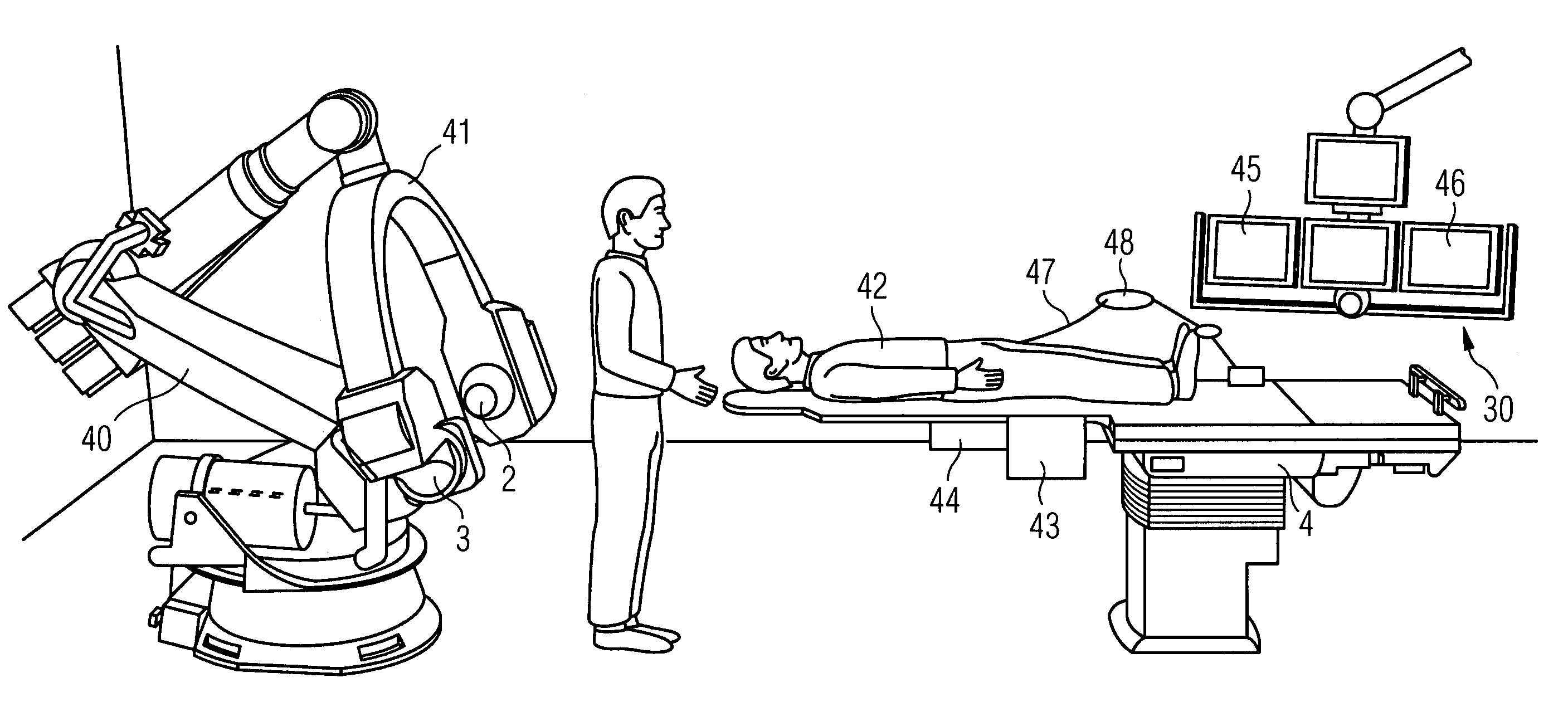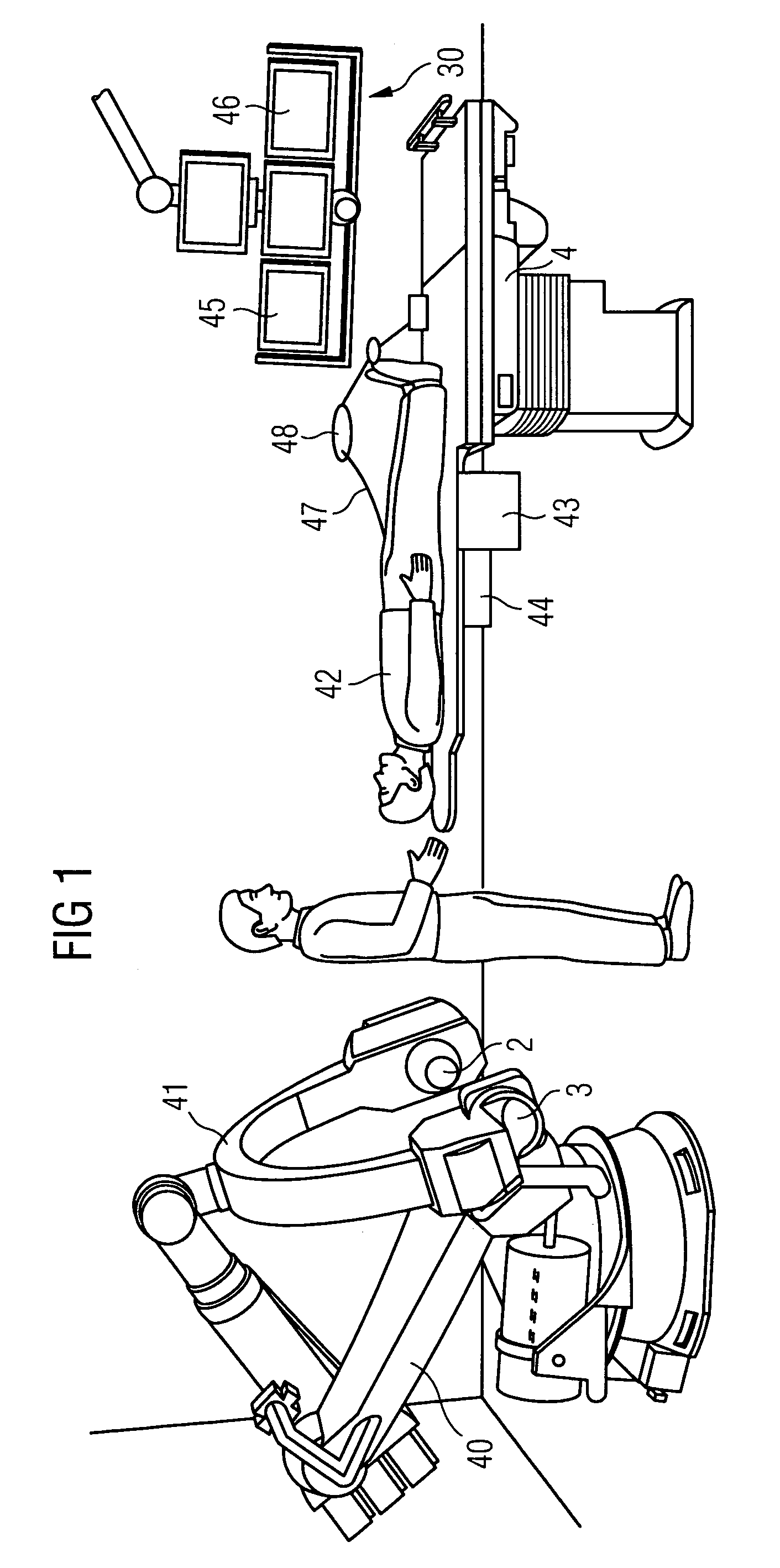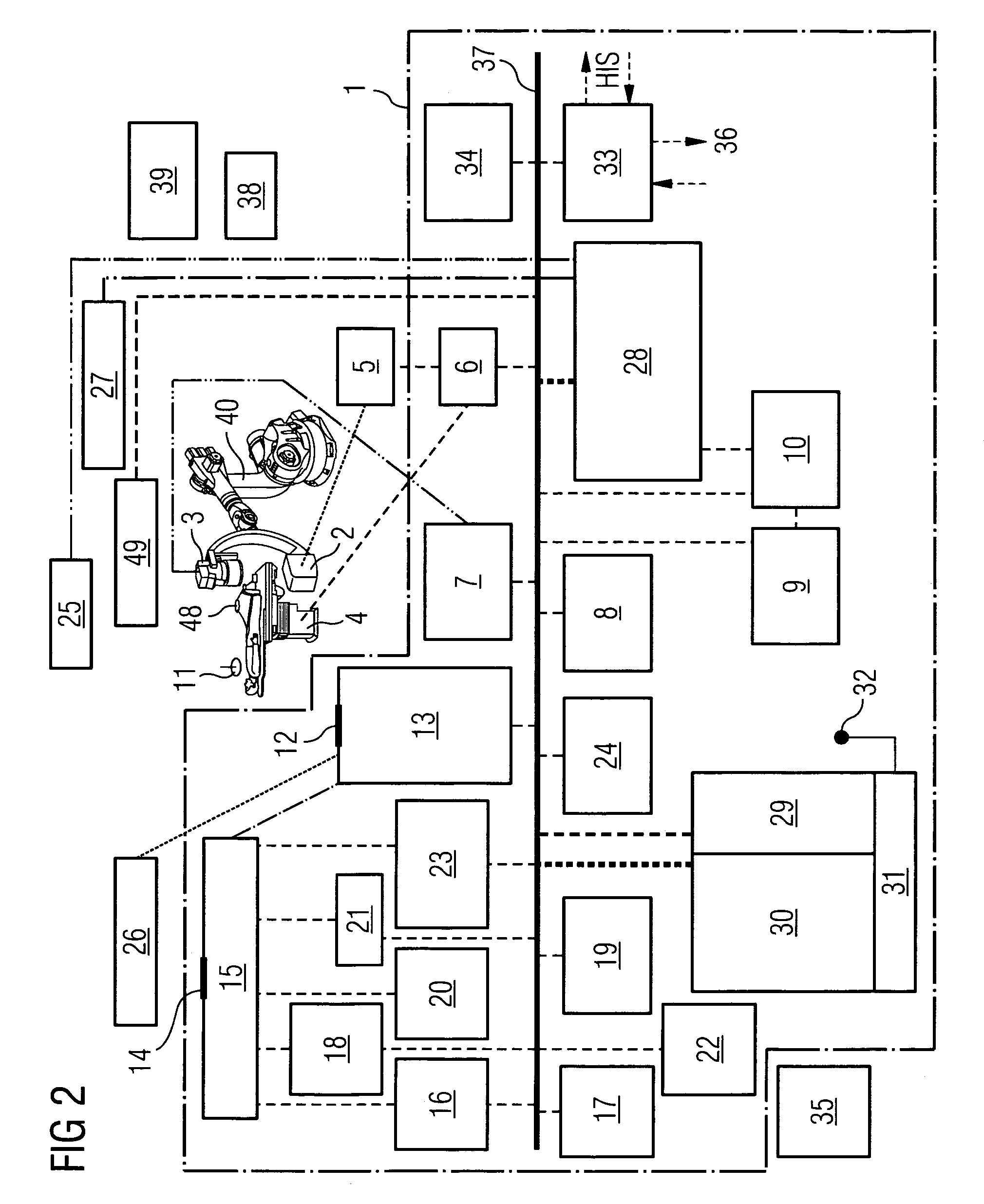System for carrying out and monitoring minimally-invasive interventions
a technology for monitoring systems and minimally invasive procedures, applied in the field of systems for carrying out and monitoring minimally invasive procedures, can solve problems such as restricted access to patients, and achieve the effect of improving patient access
- Summary
- Abstract
- Description
- Claims
- Application Information
AI Technical Summary
Benefits of technology
Problems solved by technology
Method used
Image
Examples
Embodiment Construction
[0026]FIG. 1 shows an example for a robot-based integrated electrophysiological laboratory. In this example the articulated-arm robot 40 of the x-ray device is clearly visible, which is mounted on the floor and carries a C-arm 41 with x-ray emitter 2 and x-ray detector 3. The patient support facility 4 with the patient 42 features a control unit 43 close to the patient for the x-ray device and the catheter employed. Connected to this operating unit 43 is an interface unit 44 for connection of different catheters which has a “plug&play” functionality. The operating unit 43 provides the user with selection options, so-called organ or examination programs. If an examination program, e.g. ablation, is selected by the operator, all system components, the image processing and the associated emitter, detector and table positions are set by the system control and the devices are moved automatically to these positions. The images generated by the digital image system for the fluoroscopy reco...
PUM
 Login to View More
Login to View More Abstract
Description
Claims
Application Information
 Login to View More
Login to View More - R&D
- Intellectual Property
- Life Sciences
- Materials
- Tech Scout
- Unparalleled Data Quality
- Higher Quality Content
- 60% Fewer Hallucinations
Browse by: Latest US Patents, China's latest patents, Technical Efficacy Thesaurus, Application Domain, Technology Topic, Popular Technical Reports.
© 2025 PatSnap. All rights reserved.Legal|Privacy policy|Modern Slavery Act Transparency Statement|Sitemap|About US| Contact US: help@patsnap.com



